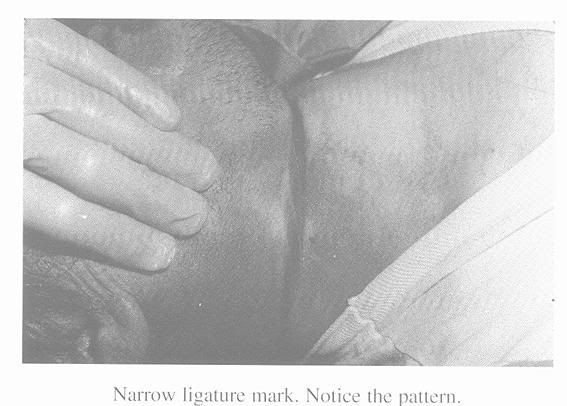Medical conditions can mimic a variety of ill's, but the fact dark blood is in all your veins & arteries(?), and not only in some organs, but not others, or in arteries but not veins, will be readily observable by anyone, especially a doctor.
Here are Dr. Phillips observations which were deleted from the inquest report on Chapman.
The evidence given by Dr. Phillips on 18 Sept. at the Hanbury-street inquest is incontrovertible proof that Annie Chapman was partially strangled before her throat was cut. When Dr. Phillips was called to see the body he found that the tongue protruded between the front teeth, but not beyond the lips. The face was swollen, the finger-nails and lips were turgid, and in the brain, on the head being opened, he found the membranes opaque and the veins and tissues loaded with black blood. All these appearances are the ordinary signs of suffocation. In Dr. Phillip's own words, "I am of opinion that the breathing was interfered with previous to death, but that death arose from syncope consequent on the loss of blood following the severance of the throat."
Then, with respect to the death of Rose Mylett, Dr Brownfield observed:
ALL INDICATED DEATH BY SUFFOCATION.
The left side of the heart was full of fluid black blood - particularly filled and particularly black - and the lungs were gorged with the same fluid black blood, meaning that for the space of several respirations she had not breathed before the heart ceased to pulsate. Looking at the condition of all the organs in conjunction with the mark round the throat, my opinion is that death was caused by strangulation by means of a cord being pulled tightly round the neck." Both quotes are published in The Star, Dec. 24, 1888.
Regards, Jon S.





Leave a comment: